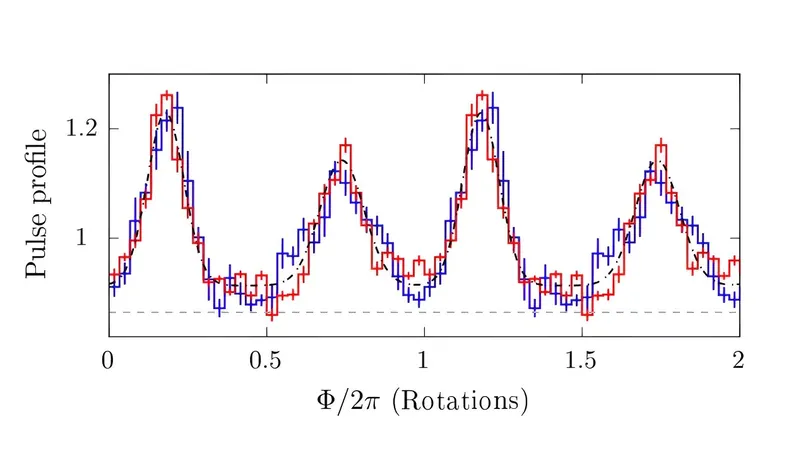
Breakthrough Discovery: Anti-Glitches Found in Pulsar PSR J1522-5735!
2024-10-08
Author: Daniel
In a groundbreaking study utilizing NASA's Fermi Gamma-ray Space Telescope, a team of Russian astronomers has made an exciting discovery: they have detected anti-glitches in the gamma-ray pulsar known as PSR J1522-5735. This remarkable finding, unveiled on September 28 and published on the pre-print server arXiv, positions PSR J1522-5735 among a select few pulsars exhibiting this rare phenomenon.
Pulsars are rapidly spinning neutron stars characterized by their intense magnetic fields and the emission of electromagnetic radiation. Most pulsars are known to exhibit glitches—sudden increases in their rotation frequency. In stark contrast, the scientists discovered that PSR J1522-5735 has shown signs of anti-glitches, a phenomenon where the pulsar experiences sudden decreases in its rotation frequency.
PSR J1522-5735, which was first identified in 2013, is a radio-quiet gamma-ray pulsar located in the Galactic plane. It spins approximately once every 204 milliseconds and boasts a surface magnetic field of about 3.61 teragauss (TG), alongside a spin-down power of a staggering 289 decillion erg/s. The pulsar's estimated age is around 51,800 years.
Under the leadership of Alexander Panin from the Institute for Nuclear Research of the Russian Academy of Sciences, the research team analyzed over 15 years of data collected by Fermi's Large Area Telescope (LAT) from August 2008 to April 2024. Their analysis revealed eight glitch events in total, of which six were categorically identified as anti-glitches.
The study noted that these anti-glitches appeared as step-like changes in both frequency and its rate of change, with no observable recovery patterns following the events. However, the astronomers mentioned that a swift recovery process occurring within days after the anti-glitches cannot be entirely dismissed, owing to gaps in the gamma-ray data available.
Interestingly, all the identified anti-glitches were found to be radiatively quiet, showing no notable changes in the pulse profile or energy flux. This observation leads the researchers to speculate that the mechanisms responsible for these phenomena may reside within the neutron star's interior.
The presence of anti-glitches in a rotation-powered pulsar like PSR J1522-5735 adds support to the hypothesis that such events might have an internal origin within neutron stars. The astronomers emphasized the need for additional observations to search for more anti-glitching pulsars to validate their findings further.
In summary, PSR J1522-5735 is officially recognized as the latest addition to the elite group of anti-glitching pulsars. Besides the six anti-glitches, two additional glitches were detected—classified as a standard spin-up glitch and another that seemed to over-recover back to a spin-down state.
This fascinating discovery not only enriches our understanding of pulsar behavior but may also pave the way for future research into the mysteries of neutron stars. Stay tuned as scientists continue to unravel the secrets hidden within these cosmic lighthouses!


 Brasil (PT)
Brasil (PT)
 Canada (EN)
Canada (EN)
 Chile (ES)
Chile (ES)
 España (ES)
España (ES)
 France (FR)
France (FR)
 Hong Kong (EN)
Hong Kong (EN)
 Italia (IT)
Italia (IT)
 日本 (JA)
日本 (JA)
 Magyarország (HU)
Magyarország (HU)
 Norge (NO)
Norge (NO)
 Polska (PL)
Polska (PL)
 Schweiz (DE)
Schweiz (DE)
 Singapore (EN)
Singapore (EN)
 Sverige (SV)
Sverige (SV)
 Suomi (FI)
Suomi (FI)
 Türkiye (TR)
Türkiye (TR)